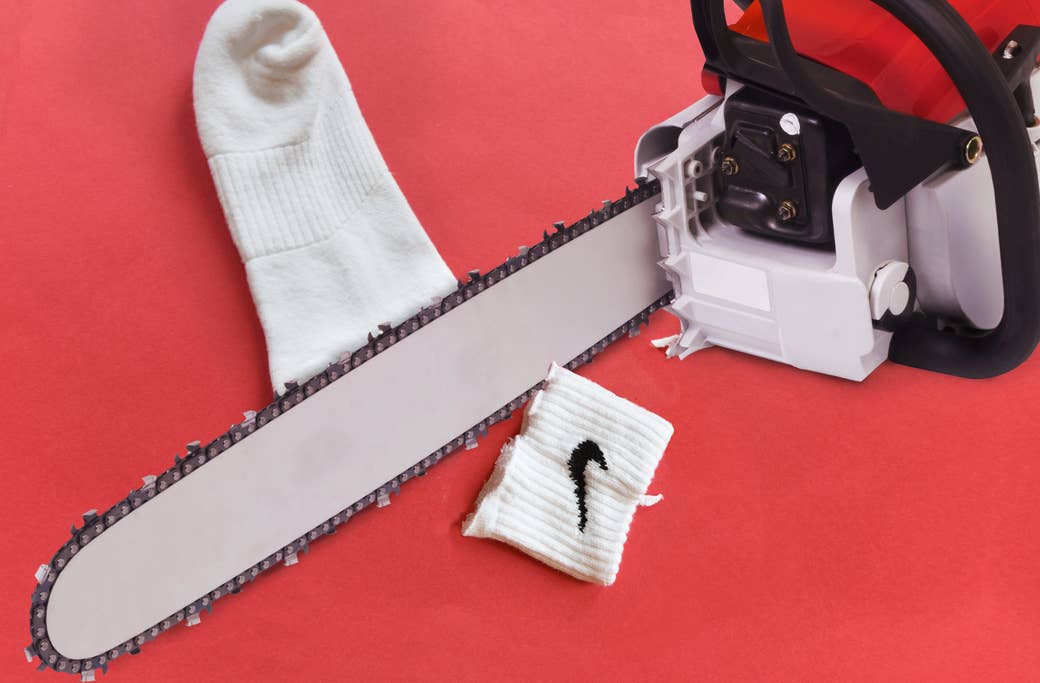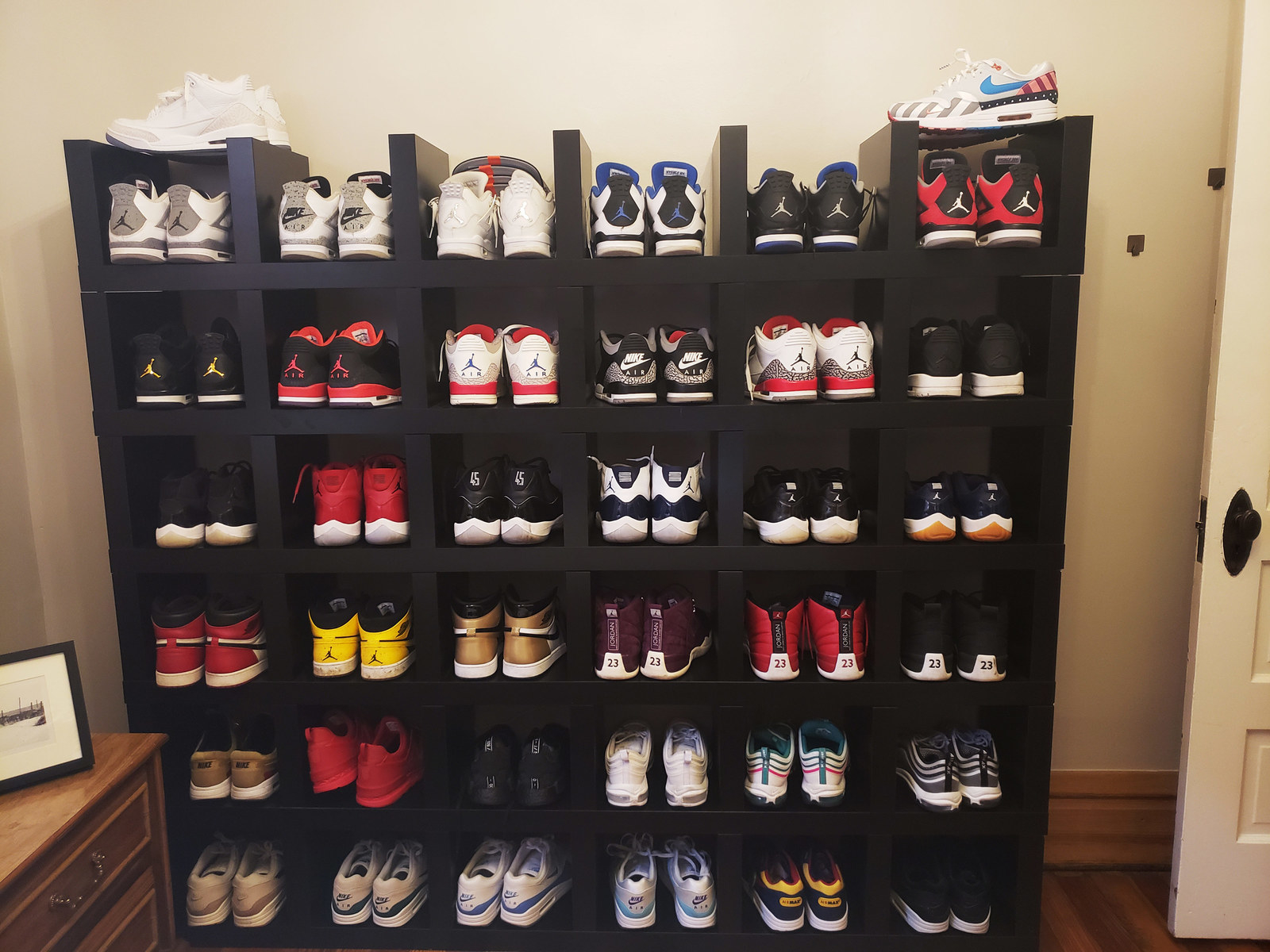
As a young person, I was taught to dress from the head down. Some of this was due to religious reasons — I was raised as a Muslim who was expected to wear somewhat traditional Muslim attire. Before I picked my day’s clothing, I had to put on a head covering — generally a kufi. From that, a full outfit would spring forth, complementing whatever colors the head covering was. My mother sewed all of my kufis and most of my clothing, so I at least had access to a closet overflowing with colors, if nothing else. This is what my family was financially capable of.
Because I didn’t grow up in a household where we could afford sneakers — particularly expensive sneakers — I often found myself wearing a single pair all year round, mostly a black pair, without much ceremony. They were shoes that could be kept clean all year round with minimal effort, even with the unpredictable weather swings of the Midwest. Because I went to schools where sneakers were a type of currency I didn’t have, I began to imagine them as a core part of an outfit, a piece of the puzzle that could distract from any other fashion shortcomings. I worked to save enough money to purchase a pair of black and red Jordan 14s right before the summer of my junior year of high school. It didn’t occur to me that no one at school would get to see me wearing them brand-new out of the box. I simply wanted access to that which I hadn’t had access to.
I own far more sneakers than I should now, with more disposable income, more physical living space, and far fewer restrictions on my clothing style. Now I dress from the feet up. I shop for clothing with the sneakers I have in mind first. Everything else I wear is an accessory in service of the sneaker. There are many reasons for this, but the most prominent reason is that for me, the feet are where the performance begins. I am not always confident in my body, and I am not often confident in the things I cloak it in. I am not often confident in my walk, or the things that come out of my mouth, but I can place firm confidence in what I put on my feet. It’s all a trick, this performance of sneakers that I have become so invested in — a game of drawing enough attention and conversation to a single place, long enough to sell someone on the other parts of myself that are less immediately striking.
To engage in this requires cognitive dissonance. Or, at least, it requires me to make peace with the manufacturing of sneakers — or at least the conditions under which some employees are forced to labor in the name of a company’s production. The vast majority of my sneakers are made by Nike, or under the Nike umbrella (Jordan, for example). I wear no pair out to the point where it can’t be passed down to someone else. I donate pairs, often to make room for other pairs. I’ve convinced myself that this is doing enough good in the face of the relentless capitalism that leads to poor labor practices. It isn’t, surely, but in order to engage in this level of performance, I have to reason away some of the more shameful aspects of a product’s creation.
It is another day on the internet and people are setting things on fire. Or cutting them to pieces, or gesturing at inanimate objects with their middle fingers. Earlier this week, Nike made Colin Kaepernick the face of its new ad campaign, culminating in a commercial starring Kaepernick that was released on Wednesday afternoon and will air during the NFL’s opening game tonight.
The tagline of the campaign is “Believe in something. Even if it means sacrificing everything.” The text is laid over a close-up shot of Colin Kaepernick’s face, stoic and determined.
There is no reasoning with the people who claim to be burning Nike items in protest of Nike giving Kaepernick a campaign. The people are still upset about Colin Kaepernick, still bellowing about his protesting the flag and the anthem and America’s troops, despite the fact that they surely know — or have at least heard or seen — the reasoning for his protest outlined by Kaepernick himself, as well as other NFL players who support him. Perhaps the people even know that a donation of their Nike apparel may aid an underserved community.
I am not often confident in my walk, or the things that come out of my mouth, but I can place firm confidence in what I put on my feet.
There is something visceral about setting fire to your belongings as a way of showing disgust. It is an immediate way to not only demonstrate to an audience that you don’t care about the material loss of an object, but also show that you are willing to engage in a violent act against your own property to nail the point home. It makes for delicious drama, sometimes for both sides of the debate. Singer John Rich of country music duo Big & Rich, for example, posted a photo on Twitter on Monday of his soundman holding the severed tops of two Nike socks. The soundman is a former Marine, and in a fit of rage at the Kaepernick news, he cut the Nike swooshes off of his own socks. There are those who view this as righteous and patriotic, and those who find it comically foolish, but the performance serves the general idea: to pull eyes away from the greater, more complicated questions raised by a corporation like Nike endorsing an activist like Colin Kaepernick, and pull eyes toward the fireworks of public disavowal.
As to those questions, I thought Nike’s gesture rang hollow, even as I watched the commercial with its stark and inspirational imagery of athletes overcoming odds, laid over Kaepernick issuing directives about achieving that which seems impossible — and even as I smirked at the news of Nike planning to run the commercial during the NFL’s opening night on Thursday. Nike’s aim feels rooted specifically in another branch of performance: the performance of discussion. Discourse isn’t always profitable in the immediate short term (for those interested in the numbers game, Nike’s stock fell 3% on Tuesday) but stakes its hopes in controversy expanding and extending beyond a week, or a month. Much of the discussion remains surface-level, though, revolving around the publicly appealing aspects of it and not how Nike reckons with its being the official brand of the NFL while leaning fully into a campaign with a player blacklisted by the NFL. If a corporation takes enough sides, there is no longer bravery, just simultaneous echoes of meaningless banter while profits ebb and flow.

The thing is, though, that Colin Kaepernick is only controversial because the people opposed to him haven’t the imagination to see him as a complete person. Nike’s ad asks its viewers to believe in something. Kaepernick chooses to believe in a more egalitarian society in which systemic racial imbalances and injustice are, at the very least, challenged. He’s backed that up, donating over a million dollars to charities since September 2016. The belief that Colin Kaepernick is controversial exists only because we are in a country where iconography can be valued more than the people living under it. What he’s asking for isn’t particularly uncommon, though the actions he’s taken (both in protest and in donation of time and money) are.
I don’t know what, if any, hand Kaepernick had in the direction of Nike’s ad or its messaging. Ultimately, when it’s all said and done, I’m most thrilled to see him continue to access platforms that might lead some people to the work he’s done. But, on its face, the campaign feels like a performance to appeal to Colin Kaepernick as merely a controversy machine.
I will not be setting any of my Nikes on fire, and I will certainly not be cutting up any clothing. I am not on the side of those who would burn their own possessions in the name of this, or in the name of anything. I grew up too poor to do anything but cling to what I’ve earned, even if I’ve earned an unnecessary abundance of it. I cling to my sneakers, those in protest of Nike cling to their ideologies, and Nike itself clings to a desire to be part of a national conversation. And it’s all an attempt to compensate for some absence — be it of confidence, of logic, or of brand accountability. If there is one thing we all have in common, it’s that we understand what it takes to draw an eye elsewhere, even if only for a moment.●
